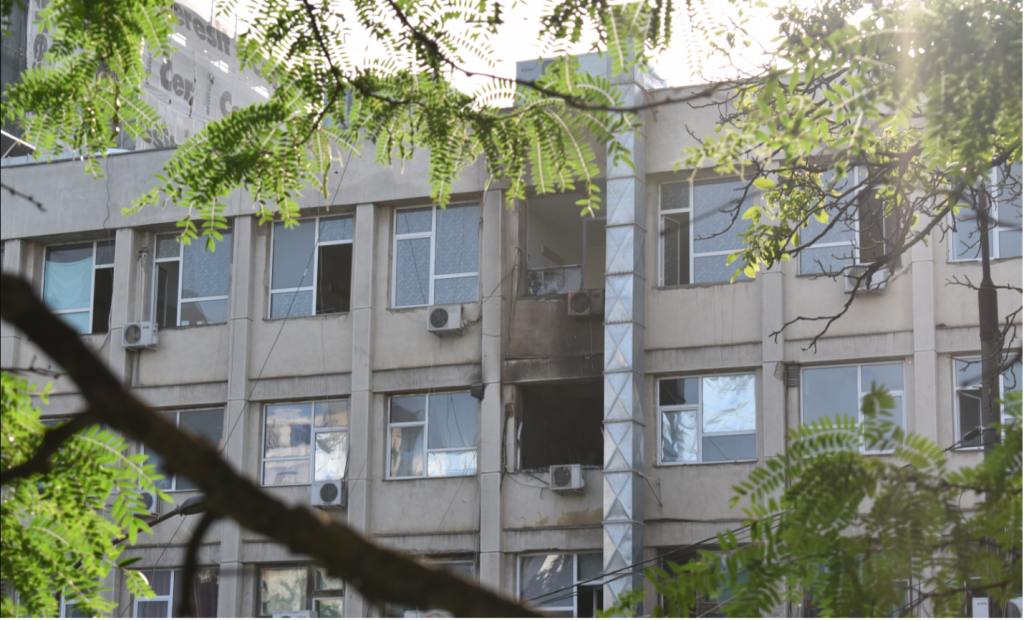Please Follow us on Gab, Minds, Telegram, Rumble, Gab TV, GETTR, Truth Social, Twitter, and Facebook
The team of journalists from the investigation outlet Context.ro in Romania has uncovered shocking details about the reasons behind the many fire outbreaks in the country’s hospitals. After more than 500 days of legal battles with the Ministry of Health, they built a public database containing details about over 300 public hospitals.
Since 2010, when six babies were burned alive at the Giulești Maternity Hospital, other Romanian hospitals have recorded major fires, and some of them claimed human lives. The most devastating ones occurred during the Covid-19 pandemic and left behind 44 dead, hundreds of injured patients, and not many were held accountable. Three large fires started from outdated electrical infrastructure.
The investigation started from this idea that some of the fires were caused by aging electrical systems, and it examined the internal infrastructure nationwide, collecting rich information that is now open to the public.
The shocking data shows that almost half of the public hospitals in Romania have ICU units with an electrical infrastructure older than 20 years. Eight ICUs have infrastructure older than 70 years, and 17 of them are older than 50 years. Two of the hospitals in Bucharest, the capital of the country, reported they found themselves required to make electrical improvisations.
In 2021, Minister of Health Alexandru Rafila declared in a press conference he was worried about a new report on the electrical infrastructure he had received. He promised to share it with the media but that never happened. The journalists from Context.ro requested the documents from the ministry but they refused to share them, despite the public nature of this information. Thus, the journalists sued the Ministry of Health. After a temporary victory, an appeal from the Ministry, and a final victory in the first quarter of 2023, the journalists got their hands on the documents.
However, during the long legal battle, they took matters into their own hands and contacted every public hospital in the country asking for information, including the money they spent on renovations and rehabilitation of the electrical system and the buildings, as well as the companies that worked on them.
Of over 300 hospitals that were contacted, 200 didn’t reply or refused to share information.

A fire broke out on Tuesday night at the Dr. Nicolae Robănescu Children's Recovery Center in Bucharest. 110 children were evacuated. Fortunately, there were no victims.
According to Andrada Mirea, the director of the hospital, the fire was caused by a transformer, after it initially exploded. The flames also spread to two cars on D. Minca Street.
The staff immediately took measures to stop the gas pumps in the hospital and proceeded to the safe evacuation of the children and their relatives.
The now infamous Minister of Health, Alexandru Rafila, paid a visit to the children 12 hours later, and when meeting the journalists he refused to make solid statements on the state of the electrical infrastructure.

The Colentina Hospital includes nine pavilions constructed between 1930 and 1940, and two built in the 1970s. The electrical infrastructure, which is just as old, has never been properly rehabilitated. According to the response submitted by the hospital, the only interventions were small and done as needed. The administration stated that only two pavilions had been renovated.
The National Institute of Rehabilitation in Slănic Moldova is located in a building that dates back more than a century, but the management has no idea how old the electrical system is. There has been no investment in the restoration of the electrical system in the last ten years.
The Leon Daniello Hospital in Cluj-Napoca dates back 130 years. The administration claimed in a response to the journalists that the electrical system has not been repaired in the last ten years. The hospital used European funding to upgrade its electrical infrastructure.
The Pitesti County Emergency Hospital has an electrical infrastructure that is over 50 years old and has only been partially rehabilitated. The intensive care ward is the only one where the electrical infrastructure has been replaced. Some of the hospital's structures date back 100 years, while the headquarters were finished in the 1970s.
The Filiași Municipal Hospital consists of five pavilions, three of which were built in 1886 and the other two in 1977. According to the hospital’s representatives, "the electrical installations were probably made concurrently with the electrification of the town of Filiași" for the facilities built in 1886 (internal medicine, laboratory and radiology, and the tuberculosis dispensary).
The investigation outlet is preparing to launch more exclusive information related to the Romanian public health sector, including interviews with experts in the field.
Source: Context.ro
An investigation by: Attila Biro, Diana Livesay, Iulia Stanoiu, Mihaela Tanase, Matthew Garvey